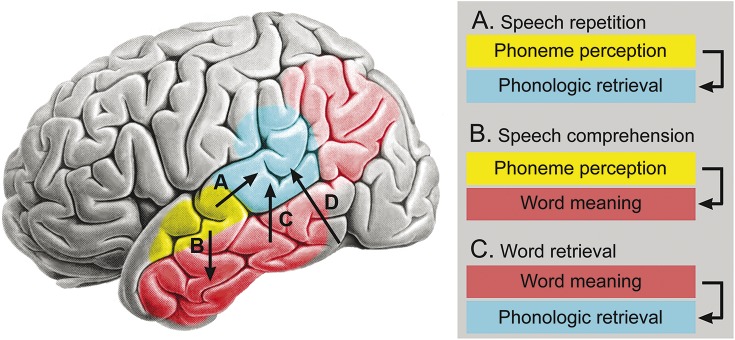Figure 3. Posterior language systems.
A functional model of major posterior language systems. Yellow indicates a bilateral speech phoneme perception system. Blue indicates the Wernicke area, which supports prearticulatory phonologic retrieval. Red indicates the temporal and parietal components of a distributed system for word meaning (semantic) representations. Speech repetition requires the pathway designated A in the figure, as well as more anterior parietal and frontal regions (not shown) that support articulatory preparation and execution. Spoken word comprehension involves the pathway marked B in the figure, which maps perceived phoneme sequences to word concepts. Communicative speech production, in which the speaker retrieves words to express concepts, requires the pathway marked C, which maps concept representations onto phonologic representations. Pathway D indicates a direct mapping from visual word forms to phonologic representations, required for reading aloud. Background brain image reproduced with permission from Springer.

